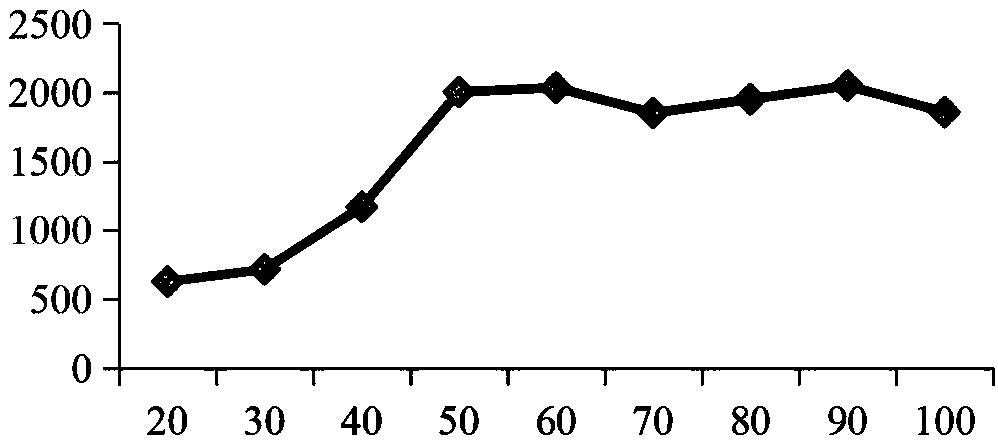Method for measuring chitosan content with resonance Rayleigh scattering method by carmine red as probe
A resonant Rayleigh scattering and chitosan technology, which is applied in the measurement of scattering properties and the preparation of samples for testing, can solve the problems of non-specificity of samples, low sensitivity and high cost, and achieve good reproducibility and high sensitivity. , the effect of easy operation
- Summary
- Abstract
- Description
- Claims
- Application Information
AI Technical Summary
Problems solved by technology
Method used
Image
Examples
experiment example
[0027] 1. Resonance Rayleigh scattering spectrogram
[0028] In a 10mL colorimetric tube, add an appropriate amount of chitosan solution with a concentration of 10μg / mL, 1.5mL of glycine-hydrochloric acid buffer solution with pH=3.0, and 1.0mL of carmine solution with a concentration of 1.0×10-4mol / L, Dilute the volume to the mark with distilled water, shake well, configure the reaction system with chitosan concentration of 0.50, 1.00, 1.50, 2.0, 2.50 μg / mL, heat in a 60°C water bath for 10min, and cool to room temperature. Set blank group and standard group. Synchronously scan at λex=λem on the fluorescence spectrophotometer to obtain the resonant Rayleigh scattering spectrum. Depend on figure 1 The results shown show that the concentration of 1-6 chitosan increases successively, the scattering value of the blank group in the experiment is low, and the scattering value increases significantly after the combination of CTS and carmine, and with the increase of the concentrati...
Embodiment
[0046] A kind of method that utilizes carmine as the resonance Rayleigh scattering method of probe to measure chitosan content, it comprises the steps:
[0047] Drawing of standard curve: In a series of 10mL colorimetric tubes, add chitosan CTS standard solution (10μg / mL) (0.5, 1.00, 1.50, 2.00, 2.50, 3.00, 3.50mL) in sequence, and at the same time add reagent Blank as a reference, pH 3.0 glycine-hydrochloric acid buffer solution 1.0mL, carmine P4R (1.0×10-4mol / L) 1.0mL, diluted with distilled water to the mark, mixed evenly to obtain a concentration gradient of (0.5, 1.00, 1.50, 2.00, 2.50, 3.00, 3.50μg / mL) standard solution. Heat in a water bath at 60°C for 10 min, and cool to room temperature. , detect the resonance Rayleigh scattering intensity of the chitosan solution to be tested, specifically carry out synchronous scanning with λex=λem, record the RRS spectrum, and measure the I of the ion association and the I of the reagent blank at 366nm respectively, survey I, Cal...
PUM
| Property | Measurement | Unit |
|---|---|---|
| Concentration | aaaaa | aaaaa |
| Concentration | aaaaa | aaaaa |
Abstract
Description
Claims
Application Information
 Login to View More
Login to View More - R&D
- Intellectual Property
- Life Sciences
- Materials
- Tech Scout
- Unparalleled Data Quality
- Higher Quality Content
- 60% Fewer Hallucinations
Browse by: Latest US Patents, China's latest patents, Technical Efficacy Thesaurus, Application Domain, Technology Topic, Popular Technical Reports.
© 2025 PatSnap. All rights reserved.Legal|Privacy policy|Modern Slavery Act Transparency Statement|Sitemap|About US| Contact US: help@patsnap.com



